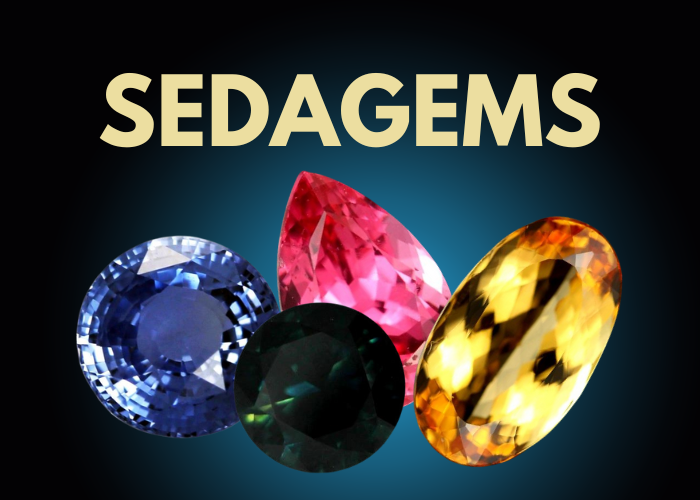U heeft niet geboden op deze veiling.
10.20 CTS ALEXANDRITE - SPECIMEN FROM TANZANIA [STS2249]
- SKU
- Afmetingen (mm)
- 12.000 x 9.000 x 9.000mm
- Gewicht (cts)
- 10.200
- Type
- Specimen
- Kleuren
-
ALEXANDRITE SPECIMEN
This is a natural untreated Alexandrite specimen from Tanzania which i bought from the miner on my last trip there. They are not suitable for faceting but can be cabbed or kept as a specimen.
The most sensational feature about this stone, however, is its surprising ability to change its colour. Green or bluish-green in daylight, alexandrite turns a soft shade of red, purplish-red or raspberry red in incandescent light. This unique optical characteristic makes it one of the most valuable gemstones of all, especially in fine qualities.
Alexandrite is very scarce: this is due to its chemical composition. It is basically a chrysoberyl, a mineral consisting of colourless or yellow transparent chrysoberyl, chrysoberyl cat’s eye and colour-changing alexandrite (also in cat’s eye varieties). It differs from other chrysoberyls in that it not only contains iron and titanium, but also chromium as a major impurity. And it is this very element which accounts for the spectacular colour change. Rarely, vanadium may also play a part. According to CIBJO nomenclature, only chrysoberyls displaying a distinct change of colour may be termed alexandrite.
Like many other gemstones, alexandrite emerged millions of years ago in a metamorphic environment. But unlike many others, its formation required specific geological conditions. The chemical elements beryllium (a major constituent in chrysoberyl) and chromium (the colouring agent in alexandrite) have contrasting chemical characteristics and do not as a rule occur together, usually being found in contrasting rock types. Not only has Nature brought these contrasting rock types into contact with each other, but a lack of the chemical element silica (the second most common element in the Earth's crust) is also required to prevent the growth of emerald. This geological scenario has occurred only rarely in the Earth's history and, as a result, alexandrite crystals are very scarce indeed.
- SKU
- Afmetingen (mm)
- 12.000 x 9.000 x 9.000 mm
- Gewicht (cts)
- 10.200
- Type
- Specimen
- Kleuren
-
ALEXANDRITE SPECIMEN
This is a natural untreated Alexandrite specimen from Tanzania which i bought from the miner on my last trip there. They are not suitable for faceting but can be cabbed or kept as a specimen.
The most sensational feature about this stone, however, is its surprising ability to change its colour. Green or bluish-green in daylight, alexandrite turns a soft shade of red, purplish-red or raspberry red in incandescent light. This unique optical characteristic makes it one of the most valuable gemstones of all, especially in fine qualities.
Alexandrite is very scarce: this is due to its chemical composition. It is basically a chrysoberyl, a mineral consisting of colourless or yellow transparent chrysoberyl, chrysoberyl cat’s eye and colour-changing alexandrite (also in cat’s eye varieties). It differs from other chrysoberyls in that it not only contains iron and titanium, but also chromium as a major impurity. And it is this very element which accounts for the spectacular colour change. Rarely, vanadium may also play a part. According to CIBJO nomenclature, only chrysoberyls displaying a distinct change of colour may be termed alexandrite.
Like many other gemstones, alexandrite emerged millions of years ago in a metamorphic environment. But unlike many others, its formation required specific geological conditions. The chemical elements beryllium (a major constituent in chrysoberyl) and chromium (the colouring agent in alexandrite) have contrasting chemical characteristics and do not as a rule occur together, usually being found in contrasting rock types. Not only has Nature brought these contrasting rock types into contact with each other, but a lack of the chemical element silica (the second most common element in the Earth's crust) is also required to prevent the growth of emerald. This geological scenario has occurred only rarely in the Earth's history and, as a result, alexandrite crystals are very scarce indeed.
| Verzend provider | Verzending naar:land | Verzending naar de rest van de wereld |
|---|---|---|
| FedEx | $12.00 / :dagen dagen | $39.00 / :dagen dagen |
|
:land
FedEx wordt verdisconteerd tot $12.00 bij bestellingen met 2 of meer artikelen
Rest van de wereld
FedEx wordt verdisconteerd tot $39.00 bij bestellingen met 2 of meer artikelen
|
||
| Registered Shipping | $9.00 / :dagen dagen | $16.00 / :dagen dagen |
|
:land
Registered Shipping wordt verdisconteerd tot $9.00 bij bestellingen met 2 of meer artikelen
Rest van de wereld
Registered Shipping wordt verdisconteerd tot $16.00 bij bestellingen met 2 of meer artikelen
|
||

-
 Positief
PositiefPaid and shipped - no feedback left after 100 days
-
 Positief
PositiefBeautiful agate piece , and as always fast efficient service from Sedagems
-
 Positief
PositiefNice
-
 Positief
PositiefGorgeous stones, very happy
-
 Positief
PositiefGorgeous stone, very happy
Waarom overbieden gebruikers zichzelf?
Wanneer er wordt geboden, is dit het maximale bedrag dat een gebruiker bereid is te bieden op het product. Ons systeem zal dan automatisch namens die gebruiker bieden, waarbij het bod stapsgewijs wordt verhoogd om hun positie als hoogste bieder te behouden, tot aan het opgegeven maximum.
Als er een pictogram is dat 'Automatisch bieden' aangeeft, betekent dit dat ons systeem actief biedingen plaatst voor de gebruiker op basis van hun maximumbod. Dit kan lijken alsof gebruikers zichzelf overbieden, maar het is gewoon het gevolg van het feit dat het systeem het bod bijwerkt om de maximumlimiet van de gebruiker weer te geven.











![22.9CTS VARASCITE 'SPIDER WEB' AUSTRALIA [MGW 4616]](https://liveplatforms-production.b-cdn.net/tenants/gr/uploads/images/490000-494999/490866/55236df10a48f.JPG?width=480&aspect_ratio=1001%3A1000)





